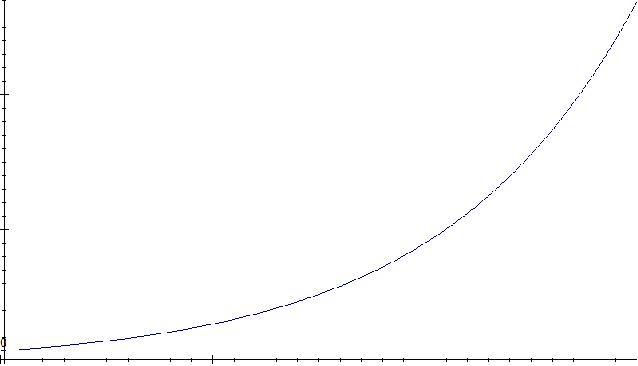If you invest money in a savings account at say 10% per year, typically you are paid compound interest. This means that as soon as the first installment of interest is paid, you start getting paid interest on your interest. If you were to draw a graph of the amount of money in your account over time you will get a curve that curves satisfyingly upwards.

The calculations go like this for an interest rate of 10%:
£1000 deposited at start of year 1 earns 10% of £1000 in interest=![]()
Amount in account at end of year 1=![]()
Amount in account at start of year 2 =£1100
£1100 earns 10% of £1000 in interest=![]()
Amount in account at end of year 2=![]()
Amount in account at start of year 3 =£1210
£1210 earns 10% of £1210 in interest=![]()
Amount in account at end of year 3=![]()
Amount in account at start of year 4 =£1331
£1331 earns 10% of £1331 in interest=![]() .
.
Amount in account at end of year 4=![]()
And so on. It is important to be methodical and work out an answer for each year separately. Alternatively we could use the formula![]()
The formula used for the example above would have given the answer
![]() as above.
as above.
